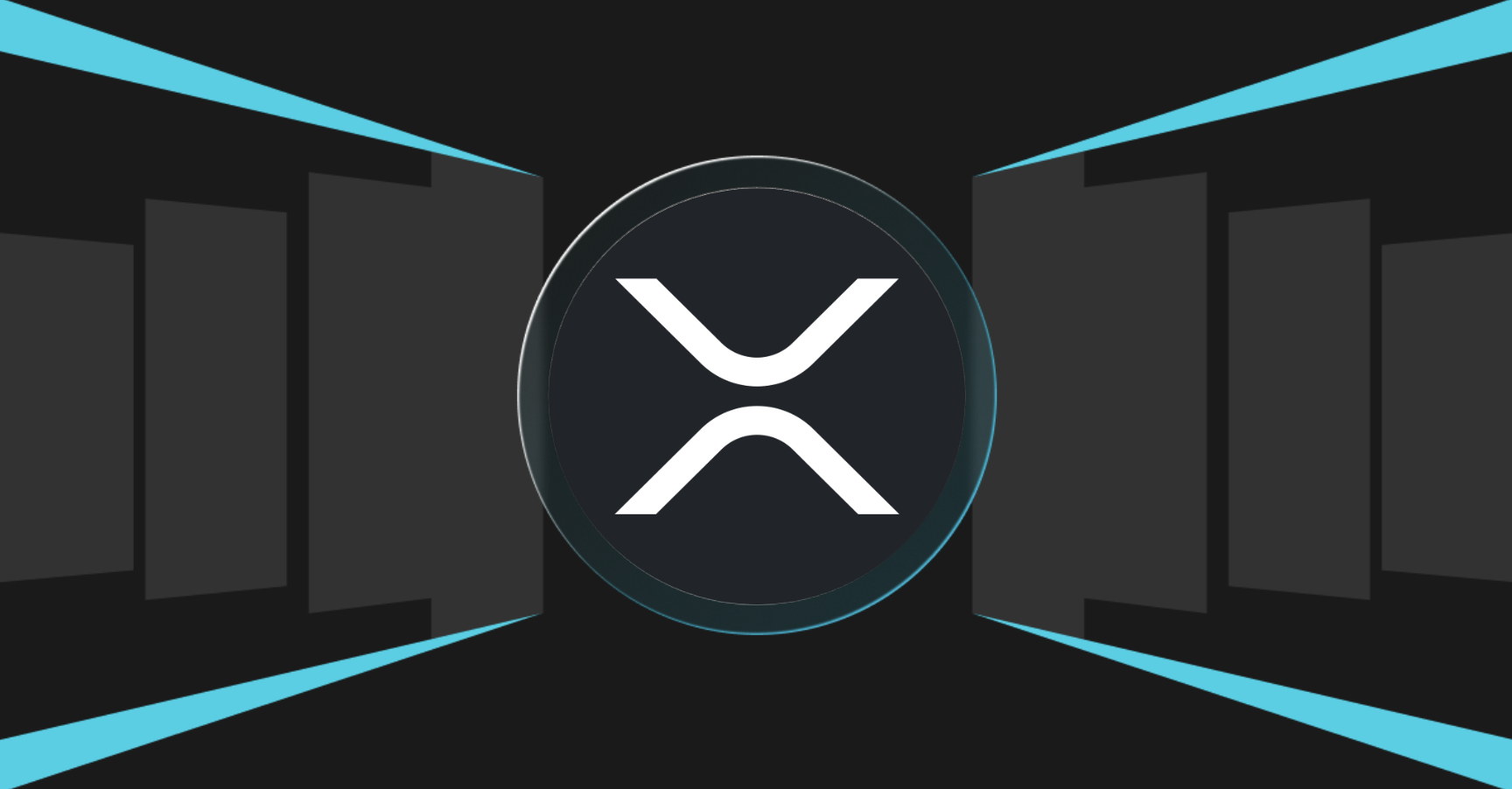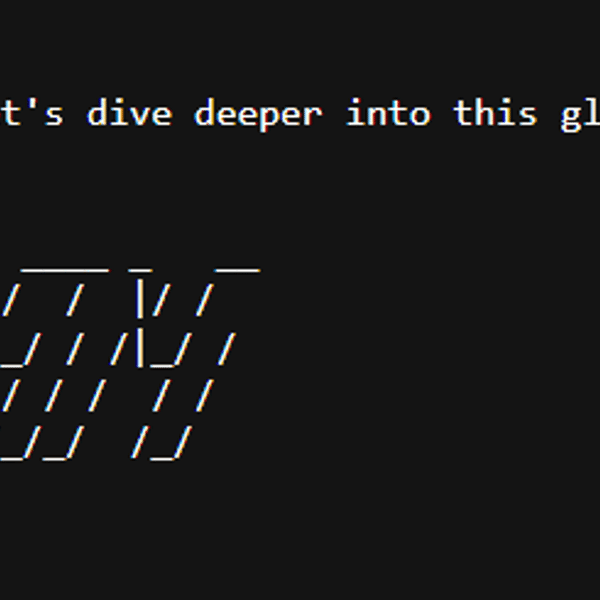Bitget:全球日交易量排名前4!
BTC 市场份额57.44%
当前ETH GAS:0.5-2 gwei
热门BTC ETF:IBIT
比特币减半年份:2024年,2028年
BTC/USDT$ (NaN%)恐惧与贪婪指数53(中性)
山寨季指数:0(比特币季)
比特币现货 ETF 总净流入流出量 +$83.1M(1日);+$2.67B(7日)。Bitget 新用户立享 6200 USDT 欢迎礼包!立即领取
到 Bitget App 随时随地轻松交易!立即下载
Bitget:全球日交易量排名前4!
BTC 市场份额57.44%
当前ETH GAS:0.5-2 gwei
热门BTC ETF:IBIT
比特币减半年份:2024年,2028年
BTC/USDT$ (NaN%)恐惧与贪婪指数53(中性)
山寨季指数:0(比特币季)
比特币现货 ETF 总净流入流出量 +$83.1M(1日);+$2.67B(7日)。Bitget 新用户立享 6200 USDT 欢迎礼包!立即领取
到 Bitget App 随时随地轻松交易!立即下载
Bitget:全球日交易量排名前4!
BTC 市场份额57.44%
当前ETH GAS:0.5-2 gwei
热门BTC ETF:IBIT
比特币减半年份:2024年,2028年
BTC/USDT$ (NaN%)恐惧与贪婪指数53(中性)
山寨季指数:0(比特币季)
比特币现货 ETF 总净流入流出量 +$83.1M(1日);+$2.67B(7日)。Bitget 新用户立享 6200 USDT 欢迎礼包!立即领取
到 Bitget App 随时随地轻松交易!立即下载

山寨季指数
在哪里购买交易量最大的加密货币?在 Bitget 上追踪流动性和交易量最大的山寨币。
Bitget 山寨季指数页面提供有关加密货币市场是否处于山寨季的实时分析。查看详细图表和指标,追踪市场动态和山寨币的主导趋势。
当前的山寨季指数:
非山寨季 - 66
过去90天,市值前100的加密货币中,只有66个币种的价格表现超过了比特币,表明加密货币市场目前不处于山寨币主导的阶段。
66
比特币季山寨季
历史数据
昨天非山寨季 - 67
7天前非山寨季 - 60
30天前非山寨季 - 40
年度最高值/最低值
年度最高值山寨季 - 87
2024-12-03
年度最低值比特币季 - 12
2025-03-05
最近更新时间
市值排名前100的山寨币近90天内的价格表现
查看所有币种价格详情
关于山寨季指数
什么是山寨季指数?
山寨季指数是一种工具,用于衡量山寨币(即比特币以外的加密货币)与比特币的相对表现。该工具通过分析历史价格数据和市场趋势,判断市场重心是否转向山寨币,或依然集中在比特币上。
如何识别山寨季?
通常情况下,当特定时间段内(如90天)表现最好的加密货币中绝大多数是山寨币而非比特币时,就被认为出现了山寨季。山寨季指数汇总了这些数据,当山寨币超过比特币表现时,指数分数较高;而当比特币更具主导性时,指数分数则较低。
如何使用山寨季指数?
山寨季指数以各种方式帮助交易者和投资者:
- 识别市场情绪向山寨币转变的信号。
- 根据山寨币的表现调整市场进出时机。
- 根据市场变化调整投资组合。
什么是山寨币市场?
山寨币市场包括所有除比特币之外的加密货币,涵盖如以太坊等成熟代币、去中心化金融(DeFi)中的流行代币以及新兴项目。“山寨币市场”这一术语通常指投资者对这些替代加密货币的兴趣和交易活动。
哪些山寨币值得关注?
以太坊是最具代表性的山寨币之一,因其智能合约功能和强大的开发者社区而受到关注。其他重要的山寨币包括币安币(BNB)、Solana(SOL)和 Cardano(ADA),其各自拥有庞大的用户基础和独特应用。
该指数包含哪些山寨币?以太坊(Ethereum)是否被视为山寨币?
山寨季指数通常包括基于市值和交易量的领先山寨币,如以太坊(Ethereum)、XRP、Litecoin 和 Cardano。是的,以太坊被视为山寨币,因为它不是比特币;它是独立开发的且拥有其区块链,并专注于智能合约。
指数背后的计算方法是什么?
山寨季指数的计算方法通常包括:
- 根据市值和交易量选择一组山寨币。
- 将这些山寨币与比特币在指定时间段(通常为90天)内的表现进行对比。
- 将这些数据编制成一个单一指数值,用以指示当前市场环境是更倾向于“比特币季”还是“山寨季”。

Dogecoin ETF and XRP ETF Set to Launch on September 18: What Investors Need to Know
Crypto investors in the United States have a new reason to pay attention this September. REX Shares and Osprey Funds are set to launch the hotly anticipated Dogecoin ETF and XRP ETF, giving both traditional and digital asset investors the chance to gain regulated exposure to two of the world’s most popular altcoins. It’s not just another headline—these launches mark a pivotal shift, bridging meme coins and major blockchain tokens with mainstream finance in a way that wasn’t possible just a few short years ago.
Whether you’re watching the crypto charts daily or just curious how these ETF launches might shake up the market, understanding the unique structures and potential price implications of the Dogecoin ETF and XRP ETF is now essential for any investor looking to stay ahead of the curve.
Details of the Dogecoin ETF and XRP ETF Launch
REX Shares and Osprey Funds—recognized leaders in digital asset fund management—have made headlines with the announcement and filings for their latest crypto ETF offerings. Bloomberg’s senior ETF analyst Eric Balchunas confirmed both the Dogecoin ETF and XRP ETF will commence trading on September 18, following brief launch delays (the Dogecoin ETF was initially targeted for an earlier debut). This expansion is a natural progression after the successful launch of the REX-Osprey Solana ETF (SSK) earlier in the year, all part of a growing strategy to bring more altcoins like Dogecoin and XRP into the mainstream investment arena.
Regulatory Structure: The RIC Framework
A foundational difference with the Dogecoin ETF and XRP ETF compared to previous crypto funds is their regulatory structure:
Registered Investment Company (RIC) Status:Both the Dogecoin ETF and XRP ETF will function as RICs, governed under the Investment Company Act of 1940. Unlike spot Bitcoin and Ethereum ETFs, which are registered as commodity trusts under the Securities Act of 1933, these altcoin funds provide multiple operational and compliance advantages for U.S. investors.
Direct Spot Exposure with Enhanced Flexibility:This structure enables each ETF to hold spot Dogecoin and XRP directly while providing flexibility to use derivatives or invest in other crypto ETFs as market conditions evolve.
Tax and Regulatory Benefits:The RIC format offers beneficial tax treatment and streamlined compliance requirements versus the C-corp models of traditional spot crypto ETFs.
Cayman Subsidiaries:Both the Dogecoin ETF and XRP ETF gain spot exposure via Cayman-registered subsidiaries, fully controlled by the funds. This approach enables effective asset management while staying compliant with U.S. regulations.
According to Bloomberg ETF analyst James Seyffart, these innovations provide “operational flexibility while ensuring regulatory compliance,” establishing an important precedent for altcoin ETFs.
Source: X
Comparison with Past Spot Crypto ETFs
Unlike spot Bitcoin and Ethereum ETFs—which hold the actual crypto assets in reserve—both the Dogecoin ETF and XRP ETF achieve exposure through offshore subsidiaries. This structure enables the Dogecoin ETF and XRP ETF to align with U.S. regulatory frameworks while still delivering near-direct price performance to investors.
Additionally, the RIC structure for the Dogecoin ETF and XRP ETF allows for easier dividend distribution and greater diversification. By contrast, spot Bitcoin and Ethereum ETFs’ C-corp structures often result in double taxation and more rigid management models. This approach takes into account lessons learned from the REX-Osprey Solana ETF, initially launched as a C-corp and later converted, as the cryptocurrency investment world matures.
Price Analysis: Dogecoin ETF and XRP ETF – Market Impact Ahead of Launch (as of September 16, 2025)
Dogecoin (DOGE) Outlook
Current Technicals:As of September 16, 2025, Dogecoin (DOGE) is trading at $0.26, representing a surge of more than 55% over the last six weeks. The breakout above $0.22–$0.24 has established a new support floor, with the 50-day moving average at $0.218 and the 200-day average at $0.191. The RSI stands at 68, signaling growing but not extreme momentum.
Potential Post-ETF Scenarios:
Bullish Case:If the Dogecoin ETF launch delivers robust institutional inflows, DOGE’s price could seek to retest $0.29, with a possible breakout to the $0.30 mark. In a continued rally, Dogecoin could reach $0.34–$0.36, reminiscent of previous bull cycles.
Volume Triggers:Trading volumes have spiked over 40% week-over-week as anticipation for the Dogecoin ETF builds. Should the ETF launch yield strong AUM and trading activity, momentum could accelerate.
Downside Risk:If the Dogecoin ETF debut underperforms, price could retrace to $0.24 or $0.218, with possible further support at $0.19 if selling intensifies.
XRP (XRP) Outlook
Current Technicals:XRP is now trading above $3.00, a level not reached since early 2018, and has more than tripled in value in the last quarter as investors prepare for the XRP ETF. With major resistance at $1.96 and $2.50 now serving as support, XRP’s 50-day and 200-day moving averages are at $2.28 and $1.60 respectively. An RSI of 74 highlights aggressive buyer interest, echoing past XRP bull runs.
Potential Post-ETF Scenarios:
Bullish Case:Should the XRP ETF attract strong market demand, XRP could target $3.50 and $3.85, possibly retesting $4.00 if flows persist post-launch.
Volume Watching:XRP has ranked among the top three cryptos by trading volume, a trend expected to continue and possibly intensify with the start of the XRP ETF.
Downside Risk:Any lag in ETF demand or a large-scale “sell the news” reaction could see XRP fall to $2.50, or as low as $1.95 under further pressure.
Historical Context:Previous spot ETF launches for Bitcoin and Ethereum saw 10–30% price surges before short-term corrections. Analysts expect similar, potentially volatile, patterns around the Dogecoin ETF and XRP ETF launch.
New ETF Products in the Pipeline
The arrival of the Dogecoin ETF and XRP ETF underlines a trend of rapid expansion in crypto ETFs. REX-Osprey has filed for additional offerings, including:
Solana (SOL) ETFs: More products on the horizon, including staking components.
TRUMP and BONK ETFs: Altcoin and meme token funds, with launch dates to be confirmed.
Avalanche (AVAX) Trust: Grayscale’s AVAX trust, pending regulatory approval, could further diversify U.S. crypto ETF offerings.
Over 90 crypto ETF applications are currently under review by the SEC, with significant decisions expected in the coming months—demonstrating the growing importance of products like the Dogecoin ETF and XRP ETF.
Conclusion
The pending rollout of the Dogecoin ETF and XRP ETF isn’t just a technical milestone—it’s a sign of where the crypto investment landscape is heading. Over the next few weeks, all eyes will be on how traders and institutions react. Will demand for these new ETFs trigger another round of altcoin rallies, or will investors take profits off the table after months of anticipation? Regardless of the initial market response, one thing is clear: Dogecoin and XRP are no longer on the fringe. With ETF access on the table, they’re officially part of the broader Wall Street conversation. If you’re thinking long-term or looking for tactical opportunities, this is a chapter in crypto history you don’t want to miss. Stay tuned for more analysis as the market digests what could be the most important altcoin ETF launches to date.
Follow Bitget on X and Win 1 BTC
Disclaimer: The opinions expressed in this article are for informational purposes only. This article does not constitute an endorsement of any of the products and services discussed or investment, financial, or trading advice. Qualified professionals should be consulted prior to making financial decisions.
Bitget 学院2025-09-16 15:19

Solana Price Prediction: Will SOL Be the Next Crypto to Hit $300?
The year 2024 saw Bitcoin’s incredible ascent from $40,000 in January to nearly $125,000. Ethereum quickly followed, tripling in price to almost $5,000 at its August 2025 peak. Now, with institutional and retail momentum building behind Solana, many in the crypto investment community are asking: is SOL poised to be “next”? With similar market conditions setting up and investors eyeing the charts, Solana price movements are under the spotlight. Will Solana price rise to new highs and break the $300 barrier in the coming weeks?
In this article, we offer an in-depth analysis on Solana price, evaluating its recent performance, structural cost support, total value locked metrics, and the powerful impact of pending ETF approvals and institutional treasuries.
Source: CoinMarketCap
Recent Solana Price Performance
Over recent months, Solana price has demonstrated impressive strength, tracking closely with the broader altcoin rally. Between June and late August 2025, Solana price surged more than 70%, fueled by accelerated adoption and strong market sentiment.
While encountering resistance around the $220 level and dipping below $200 in early September, Solana price has quickly rebounded by over 12%, currently trading above $240. Analysts cite that at $160, SOL has set a higher low, a bullish technical indicator for further gains. The support range of $213–$221 has also proven resilient, suggesting a solid base for an upward Solana price trajectory.
Solana’s Structural Cost Basis
Understanding the ownership structure underpinning Solana price can shed light on its future potential. The distribution of SOL tokens is “olivary-shaped,” with the majority of active traders’ cost centered around $203. Approximately 7% of the circulating supply is held between $203 and $242, while nearly 40% is accumulated in the $162–$203 bracket. This means that any Solana price surge may see some profit-taking from holders at lower cost bases, but with much of the trading in this band already flushed out, the risk of heavy, immediate selling pressure is limited.
Furthermore, the last significant round of bulk acquisitions occurred around the $144 level, with many recent holders now keen to wait for more substantial profits before considering sales.
Solana TVL Data: DeFi Growth Boosts Solana Price
A chief driver behind the rising Solana price is its rapidly increasing Total Value Locked (TVL). As of September 2025, Solana TVL reached a new high of $12.27 billion—a stunning 57% increase since the June low of $7.8 billion. This uptrend is led by core dApps including Raydium (32% monthly TVL growth), Jupiter DEX, Jito liquid staking, and Sanctum protocol. These apps collectively reinforce Solana’s position as a critical DeFi ecosystem, surpassing not only many layer-1s but also outpacing Ethereum’s own layer-2 networks in TVL rankings. Growth in TVL means higher network participation, stronger demand, and ultimately, a higher potential Solana price.
Source: DefiLlama
ETF and Treasury Developments: Fuel for the Next Solana Price Surge
Upcoming ETF announcements could serve as an explosive catalyst for the next Solana price rally. Multiple heavyweight institutions—including Grayscale, VanEck, Franklin Templeton, Bitwise, Fidelity, and Galaxy Digital—have filed for spot Solana ETFs in the US. Investors are watching closely as the SEC prepares key decisions, with October 10 as a critical date that could pave the way for several launches by year-end.
Meanwhile, the rise of institutional Solana treasuries is throttling supply and amplifying bullish momentum. Forward Industries secured a $1.65 billion commitment to acquire and stake SOL, led by Galaxy Digital, Jump Crypto, and Multicoin Capital. Recent purchases by Galaxy Digital alone involved over $486 million in SOL, cementing their stake in what CEO Mike Novogratz calls “SOL season.” Additional support from firms like BIT Mining and Upexi is further consolidating the foundation for continued Solana price appreciation.
Solana Price Prediction: Is $300 Achievable?
Given all current indicators, a Solana price target of $300 in the near term appears realistic. Here’s why:
Technical Structure: Higher lows and robust buying zones above $200 suggest healthy price construction with minimized downside.
On-chain Expansion: Record-high TVL and thriving DeFi activity point to sustainable long-term demand and rising utility.
Institutional Backing: Substantial inflows from corporate treasuries, along with anticipation over ETF launches, are reducing available supply and attracting new investors.
Macro Tailwinds: The Federal Reserve's September meeting, with expectations for the first rate cut since late 2024, could bolster appetite for high-growth crypto assets like Solana.
Analysts from Delphi Digital and other research firms pin their short-term target between $250 and $300 for Solana price—especially if ETF approvals and institutional flows align with ongoing bullish sentiment.
Conclusion
Solana price is primed for a potential breakout, propelled by robust fundamentals, enthusiastic institutional adoption, strong on-chain growth, and a powerful ETF narrative. While all investments entail risks, the setup for SOL in late 2025 closely mirrors the conditions that fueled Bitcoin and Ethereum’s historic surges. For investors seeking the next big opportunity in the digital asset market, watching Solana price in the coming weeks is essential.
Disclaimer: Crypto assets are highly volatile and investments carry risk. This analysis is informational and not financial advice. Please conduct individual research before investing in Solana or any digital asset.
Bitget 学院2025-09-15 04:36

Anatomy of a Top-Tier Exchange: A Bitget Market Analysis
This report draws on CoinDesk data’s proprietary market data infrastructure to deliver a comprehensive deep dive into exchange-level activity, offering high-resolution insights into volumes, market share, and asset-specific trading trends. The content below is edited from the full report here.
At a Glance: The Bitget Performance Benchmark
● $11.5 trillion in derivatives volume handled since late 2023● #1 global liquidity for ETH & SOL spot markets● Top 3 global ranking for execution quality● Institutional AUM doubled in H1 2025
1. Executive Summary
Bitget has cemented our standing as a top-tier global exchange, shaped by derivatives-first market architecture, high-performing liquidity provisions, and rising institutional flow. Drawing on over 20 months of granular volume, market share, and liquidity data, this report benchmarks Bitget’s growth trajectory and competitive positioning using CoinDesk Data’s proprietary analytics infrastructure.
In H1 2025, Bitget averaged $750B in total monthly volume, with derivatives accounting for nearly 90% of activity, underscoring leverage-native user base. Notably, Bitget ranked in the top four globally for derivatives volume, achieving a 15.1% market share in late 2024 and maintaining a 12.4% average share through H1 2025. Bitget's cumulative derivatives volume since November 2023 totalled $11.5T, placing us among the industry's most active venues.
While spot activity remains secondary, Bitget has built strategic momentum. Bitget Onchain product launch in April 2025 helped drive a 32% month-on-month surge in spot volumes, peaking at $102.8B in May and lifting overall market share to 5.2%. The platform’s native token, BGB, ranked as the third-most traded spot asset, with BTC, ETH, and BGB collectively accounting for 44% of H1 spot volumes.
Volume distribution across sectors affirms Bitget’s altcoin strength. Layer-1s, memecoins, and CEX-native tokens made up over 75% of spot activity, with BGB alone rivaling entire market sectors in turnover. Meanwhile, newly listed tokens like PI reached breakout status, with $8.6B in H1 volume despite a late Q1 listing.
Bitget’s liquidity performance was industry-leading in several key markets. During April-June 2025, the exchange ranked #1 in aggregated ETH and SOL spot depth within 1% of the mid-price, and #2 in BTC, ahead of major regional and global competitors. For institutional execution, Bitget’s average BTC-USDT spot slippage was just 0.0074% for a $100K trade, placing it among the top three exchanges for execution quality.
Institutional flow continues to reshape the platform. In H1 2025, institutions accounted for 80% of spot volume and 50% of derivatives, with AUM doubling year-to-date. These shifts coincide with product upgrades, including a new Liquidity Incentive Program, institutional lending, and a unified margin system set to launch in Q3.
2. Volume Insights
The story of Bitget's growth is written in trading volume. Bitget’s trading activity has expanded significantly, with total volumes exceeding $500B in 8 of the last 10 months. Volumes culminated in a record $1.19T in December 2024—a 5.3x increase from November 2023.
Two distinct volume cycles emerged during this period:
● Q1 2024: Bitget's combined volumes surged 2.3x to $867B, driven by altcoin and memecoin activity. Derivatives represented 90.8% of this volume.
● Q4 2024: Combined volumes exceeded $2.3T across November and December, with derivatives alone crossing the $1T mark in both months amid high market volatility.
Despite market moderation in H1 2025, Bitget maintained a higher baseline of activity. Total volume in June 2025 ($504B) remained 2.3x higher than November 2023 ($223B). This performance underlines Bitget’s evolution into a scaled venue for global trading.
● Cumulative Volume (Nov 2023 - Jun 2025): $12.8T
● Peak Monthly Volume: $1.19T (Dec 2024)
Spot vs Derivatives
Derivatives are the engine of Bitget, which consistently account for ~90% of total notional volume. This dominance holds across both bull and bear markets, solidifying Bitget’s position as a primary venue for perpetuals trading.
● Peak Dominance: 92.9% derivatives share (in Oct 2024).
● 2025 YTD Average: 89.7% derivatives share.
Top 3 Assets (Spot): BTC, ETH, BGB
Spot trading is gaining momentum, helped by the April launch of the Bitget Onchain platform. Spot volumes surged 32% month-on-month to $102.8B in May, lifting overall market share to 5.2%. The exchange’s native token, BGB, ranked as the third-most traded spot asset, alongside BTC and ETH, which collectively accounted for 44% of H1 spot volumes.
Six assets—BTC, ETH, BGB, XRP, DOGE, and SOL—appeared in the monthly Top 10 every single month.
This highlights a stable trading environment for core assets. The Top 3 assets (BTC, ETH, BGB) accounted for 44% of total spot activity, and the Top 10 represented 60%, indicating a concentrated but stable market. While new listings like PI saw breakout volume ($8.6B in H1), core assets provide a more consistent liquidity base.
Derivatives Volume Market Share
Bitget has significantly expanded our share of global derivatives trading, outpacing peers like Crypto.com and Kraken.
Average Monthly Derivatives Volume (Nov 2023 - Jun 2025):
● Bitget: $576B
● Crypto.com: $83B
● Kraken: $24B
Key Milestones:
● In late 2024, Bitget captured an average of 15.1% of global derivatives volume across two consecutive months.
● By May 2025, Bitget maintained a top-4 spot globally, processing 12.4% of the world's derivatives trades.
● Overall, Bitget handled $11.5T in cumulative derivatives volume, representing 12.8% of the global total ($90.2T) for the period.
This performance reaffirms Bitget’s growth into a structurally relevant derivatives venue; now firmly embedded within the Top-Tier of global exchanges.
Open Interest Leadership of Top Assets
Bitget’s market presence extends beyond volume to Open Interest (OI), where Bitget consistently ranks among the top exchanges for key assets. In H1 2025, a comparative analysis showed Bitget held the third-highest notional OI overall across BTC, ETH, SOL, and XRP, behind only Binance and Bybit.
● Bitget ranked 3rd in average OI for BTC ($4.9B), ETH ($2.0B), and SOL ($1.1B).
● Most notably, Bitget led all exchanges in average XRP open interest ($1.2B), outpacing Binance ($0.9B) and Bybit ($0.7B).
This consistent leadership in OI highlights Bitget’s growing liquidity footprint and structural importance in the derivatives market.
3. Liquidity Insights
Market Depth Methodology
Market depth is a key measure of liquidity, showing the volume of buy and sell orders within a certain price range. For traders, higher market depth means better price stability and the ability to execute large orders with minimal price impact. On this front, Bitget stands out.
The following analysis measures average market depth within 1% of the mid-price for key assets, providing a benchmark for execution quality.
● BTC Market Depth: Top 2
Bitget ranks #2 in BTC liquidity (391.9 BTC average depth), allowing you to execute large orders with minimal price impact. Liquidity is deepest and most efficient in the BTC-USDT pair.
● ETH Market Depth: #1 Globally
Bitget is the #1 exchange for ETH liquidity (15,959 ETH average depth), making us a premier venue for large spot trades. Our market offers deep liquidity across ETH-USDT, ETH-USDC, and ETH-BTC pairs, giving you more strategic trading options.
● SOL Market Depth: Another #1 Ranking
Bitget also leads all exchanges in SOL liquidity (116,669 SOL average depth), offering traders superior pricing and fills on large orders. The SOL-USDT pair provides the most concentrated depth for efficient trading.
This market-leading liquidity translates directly into tangible advantages for our Bitget traders: better pricing, tighter spreads, and the confidence that your large orders can be filled instantly without significant price impact.
Slippage & Cost of Execution
With slippage among the top three exchanges (just 0.0074%), your trades execute at the price you expect. Combined with our fee structure, your total execution cost can be as low as 0.0374% as a VIP, directly improving your profitability on every trade.
4. Conclusion
The data confirms it: Bitget has become a structurally significant global trading venue. Our growth is built on sustained leadership in derivatives (ranking top 4 globally with over $11.5T in volume), expanding institutional trust, and superior market liquidity.
Our platform’s performance speaks for itself. We deliver #1 global liquidity for ETH and SOL spot markets, top-two liquidity for BTC, and top-three execution quality with slippage as low as 0.0074% on major pairs. This combination of massive scale, professional-grade tools, and best-in-class execution is why institutions are doubling their assets on our platform.
Whether you're a professional or just starting, you deserve to trade on a platform built for performance and trusted by the best. Join us and trade with confidence today!
Disclaimer: The inclusion of any service providers or service offerings referenced within this report are solely for informational and contextual purposes. This report is intended for educational purposes only and does not constitute financial, legal, or investment advice.
Bitget 学院2025-09-08 07:31
山寨币的类型
山寨币在功能和共识机制上有所不同,根据这些差异,它们可以被划分为多个类别。以下是一些主要类别的简要指南:
基于挖矿产生的山寨币基于挖矿产生的山寨币是依赖于挖矿过程来完成交易验证和区块链更新的加密货币。根据山寨币的设计,这一过程可能使用工作量证明(PoW)共识机制。比特币、莱特币和门罗币是最著名的挖矿型山寨币。
公链币公链币是原生代币,用于支持和运作像以太坊(ETH)、Solana(SOL)和 Avalanche(AVAX)这样的区块链平台。它们主要用于支付网络交易手续费、执行智能合约以及参与网络治理。
稳定币稳定币与美元或欧元等法定货币的价值紧密挂钩,确保用户能够在维持价格稳定的同时,实现快速且低成本的价值转移。
实用代币实用代币用于在特定区块链平台或去中心化应用(DApp)中获取产品或服务。例如,用户可能需要购买实用代币,以便在去中心化云平台上获取存储空间,或参与去中心化金融(DeFi)服务。
证券代币证券代币是基于区块链的数字资产,与传统证券具有相似性。它们可能以所有权、分红支付或债券的形式提供权益。证券代币通常通过证券代币发行(STO)或首次交易所发行(IEO)推出。
模因币模因币是一种由互联网和社交媒体推动流行的加密货币,除了社区的支持和炒作,它们通常没有显著的实际用途或基础价值。典型的模因币包括 DOGE、SHIB、PEPE 和 GOAT。
Bitget新上架的山寨币
| 名称 | 最新价 | 涨跌幅 | 24小时成交额 | 上线时间 | 交易 |
|---|---|---|---|---|---|
 PORTALS/USDT | 0.222976 | +11.41% | 1,105.34万 | 2025-09-16 | 交易 |
 ZKC/USDT | 0.7614 | -5.24% | 4,725.45万 | 2025-09-15 | 交易 |
 PINGPONG/USDT | 0.077713 | +6.72% | 343.14万 | 2025-09-11 | 交易 |
 HOLO/USDT | 0.3894 | -0.62% | 1,677.86万 | 2025-09-11 | 交易 |
 FROGGIE/USDT | 0.069148 | -1.03% | 389.65万 | 2025-09-10 | 交易 |
 LINEA/USDT | 0.02563 | -0.69% | 2,151.29万 | 2025-09-10 | 交易 |
 AVNT/USDT | 0.9641 | -5.31% | 2.69亿 | 2025-09-09 | 交易 |
 SWTCH/USDT | 0.1251 | +0.11% | 6,437.94万 | 2025-09-09 | 交易 |
 ART/USDT | 0.028019 | -1.33% | 6,727.19万 | 2025-09-09 | 交易 |
 OPEN/USDT | 0.85896 | -1.05% | 2,712.11万 | 2025-09-08 | 交易 |
 BOOST/USDT | 0.090073 | +7.37% | 248.09万 | 2025-09-05 | 交易 |
 TRADOOR/USDT | 2.062 | +0.28% | 23.80万 | 2025-09-04 | 交易 |
 GATA/USDT | 0.03967 | +3.60% | 62.78万 | 2025-09-04 | 交易 |
 SOMI/USDT | 1.2342 | -5.34% | 3,776.10万 | 2025-09-02 | 交易 |
 Q/USDT | 0.0308098 | +2.97% | 1,560.97万 | 2025-09-02 | 交易 |
 PTB/USDT | 0.062006 | -1.00% | 1,996.32万 | 2025-09-03 | 交易 |
 WLFI/USDT | 0.2215 | -1.07% | 1,240.96万 | 2025-09-01 | 交易 |
 LIVE/USDT | 0.01757 | -3.62% | 25.53万 | 2025-08-28 | 交易 |
 CAMP/USDT | 0.04968 | -0.30% | 77.11万 | 2025-08-27 | 交易 |
在 Bitget 上购买山寨币:领先的热门加密货币平台
想购买山寨币吗?通过 Bitget 应用,您可以直接购买 BGB 和其他主流山寨币。立刻了解如何在 Bitget 上购买山寨币。
Bitget app
买币指南
如何购买
Bitcoin (BTC)

如何购买
Ethereum (ETH)

如何购买
Ripple (XRP)

如何购买
Tron (TRX)

如何购买
Dogecoin (DOGE)

如何购买
Tezo (XTZ)

如何购买
Bitget Token (BGB)

如何购买
Polygon (POL)

如何购买
Solana (SOL)

如何购买
Terra Classic (LUNC)

如何购买
Fantom (FTM)

如何购买
Bitcoin Cash (BCH)

如何购买
Ethereum Classic (ETC)

如何购买
Litecoin (LTC)

如何购买
Binance (BNB)

如何购买
Avalanche (AVAX)

如何购买
Internet Computer (ICP)

如何购买
Tether (USDT)

如何购买
USDC (USDC)

如何购买
Uniswap (UNI)






































































































